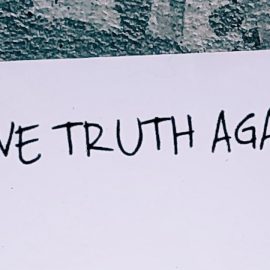

This article is an excerpt from the Shortform book guide to "Wanting" by Luke Burgis. Shortform has the world's best summaries and analyses of books you should be reading.
Like this article? Sign up for a free trial here.
Why do we enter competitive relationships? Or, why do some of our relationships become competitive?
According to author Luke Burgis, most of our desires aren’t actually our own. In his book Wanting, he uses the theory of “mimetic desire” to explain how we mimic what others want or have, which can unknowingly lead us into competitive relationships.
Read on to learn the psychological reasons why we enter competitive relationships, according to Burgis.
Desire’s Effect on Relationships
According to Luke Burgis’s book Wanting, most of our desires are mimetic, meaning we mimic what others want or have. Is it bad to be under the influence of “mimetic desire”? Not necessarily, Burgis explains. Mimetic desire is simply a process by which you come to desire what you do—and there’s nothing inherently wrong with following your mimetic desires. Pursuing these desires can have both negative and positive outcomes. In this article, we’ll explain one of the negative effects of mimetic desire—competitive relationships.
Reasons for Being in a Competitive Relationship
According to Burgis, mimetic desire can drive people to enter competitive relationships—relationships that can escalate to unhealthy and even dangerous levels. Burgis specifies that you only compete with nearby models because you share resources with them (space, money, popularity, and so on). In order to complete, you have to compete for some resource. You don’t share resources with faraway models, so you don’t compete with them.
(Shortform note: One expert on Girard’s theory explains that competitive relationships driven by mimetic desire are different from non-mimetic competitive relationships. This idea sheds light on why the former can escalate so easily into unhealthy or dangerous conflict. In a non-mimetic competitive relationship, you compete over a resource (such as a job promotion)—and only that resource. By contrast, in a mimetic competitive relationship, you compete both for a resource and the qualities you associate with winning it. This is because, as previously noted, mimetic desires are often about wanting the qualities of another person. Therefore, there’s more at stake in mimetic competitive relationships, creating more tension—tension that can boil over.)
Let’s break down the stages of how mimetic competitive relationships form and escalate.
Stage 1: You desire something that one of your nearby models desires or has. For example, imagine you’re in graduate school for biology. One of your classmates chooses an exciting topic for their graduate thesis, and this makes you choose a similar topic for your thesis.
Stage 2: Your model notices that you’re pursuing a similar desire, which makes them feel threatened. Because your topics are similar, your model worries your thesis will outshine theirs. In this case, the resources you’re competing for are attention and success.
Stage 3: You and your model enter a competitive relationship in which you try to differentiate yourselves. Your model copes with the perceived threat by differentiating their work from yours: They decide to collect data for their project in a unique way. This makes you feel threatened—will their unique technique make their project better, stealing attention and success from you? You respond by differentiating your work in another way—by partnering with a well-known scientist. By now, you and your model are deep into a game of comparison.
Stage 4: Your competitive relationship escalates. As the competition continues, you and/or your model may make the poor choice to “win” the competition by sabotaging each other’s projects. This conflict could even grow beyond the two of you. For instance, perhaps your classmates may take sides, further escalating the tensions in the department. According to Girard, some competitive relationships even escalate to violence.
(Shortform note: Girard is well-known for his idea of the “scapegoat mechanism,” an element of his theory of mimetic desire that seeks to explain how people deal with escalated competitive relationships. Girard claims that groups often end competitive relationships by singling out a person or group as a scapegoat and getting rid of them (through social ostracization, denial of privileges, and even murder). Because the scapegoat mechanism doesn’t directly relate to this guide’s focus on strategies for improving your life, we don’t explore it here in depth.)
| Opportunities for Halting the Escalation of Mimetic Competitive Relationships In Stage 4 of the formation of competitive relationships, Burgis notes the role that choice plays in either halting or further escalating the conflict. His acknowledgment of choice suggests that violence isn’t an inevitable consequence of entering a mimetic competitive relationship—our moral desire for peace can halt a competition before it escalates too far. However, in the other stages (Stages 1 to 3), Burgis doesn’t consider factors beyond mimetic desire that influence competitive relationships. Like Stage 4, do these stages also provide opportunities for halting the competition? Let’s revisit each of these stages and consider factors during each that could prevent the competitive relationship from escalating further. Stage 1: You desire something that one of your nearby models desires or has. Psychology research reveals that we may not necessarily enter competitive relationships because we desire what our competitor has—rather, we may just want validation for our skills. This research shows that humans are naturally driven to show their abilities to others so they receive validation that they’re skillful. Therefore, if you find another way to meet your need for validation, your competitive relationship may end at Stage 1. For example, you could ask your biology adviser for validating feedback on each step in your thesis-writing process, decreasing your reliance on the competitive relationship as a source of validation. Stage 2: Your model notices that you’re pursuing a similar desire, which makes them feel threatened. One critic of Girard’s theories claims that mimetic desire only drives people into competitive relationships if the resources they share are scarce. This idea suggests that people may feel less threatened in environments where there’s a greater abundance of resources (or no competition over those resources altogether). Therefore, cultivating a non-competitive environment could end your competitive rivalry at Stage 2. For instance, you could start a collaborative thesis-writing group. This would signal that the resource of success isn’t a scarce resource that you and your classmates need to compete over—rather, success is an abundant resource many students can access. Stage 3: You and your model enter a competitive relationship in which you try to differentiate yourselves. Whether you and a nearby model reach this stage may depend on your personalities and how you express them. Psychology research shows that some people have more competitive personalities because they derive a sense of self-worth from being “the best.” Therefore, if you know you have a competitive personality, you might prevent yourself from reaching Stage 3 by seeking a more positive outlet for your competitiveness. For instance, you could try competing with yourself by striving to turn in a better project than you have in the past instead of trying to be better than your classmate. |

———End of Preview———
Like what you just read? Read the rest of the world's best book summary and analysis of Luke Burgis's "Wanting" at Shortform.
Here's what you'll find in our full Wanting summary:
- Why we want the things that we want
- How our desires are influenced by what other people want or have
- Strategies for living a more meaningful life by taking control of what we want






